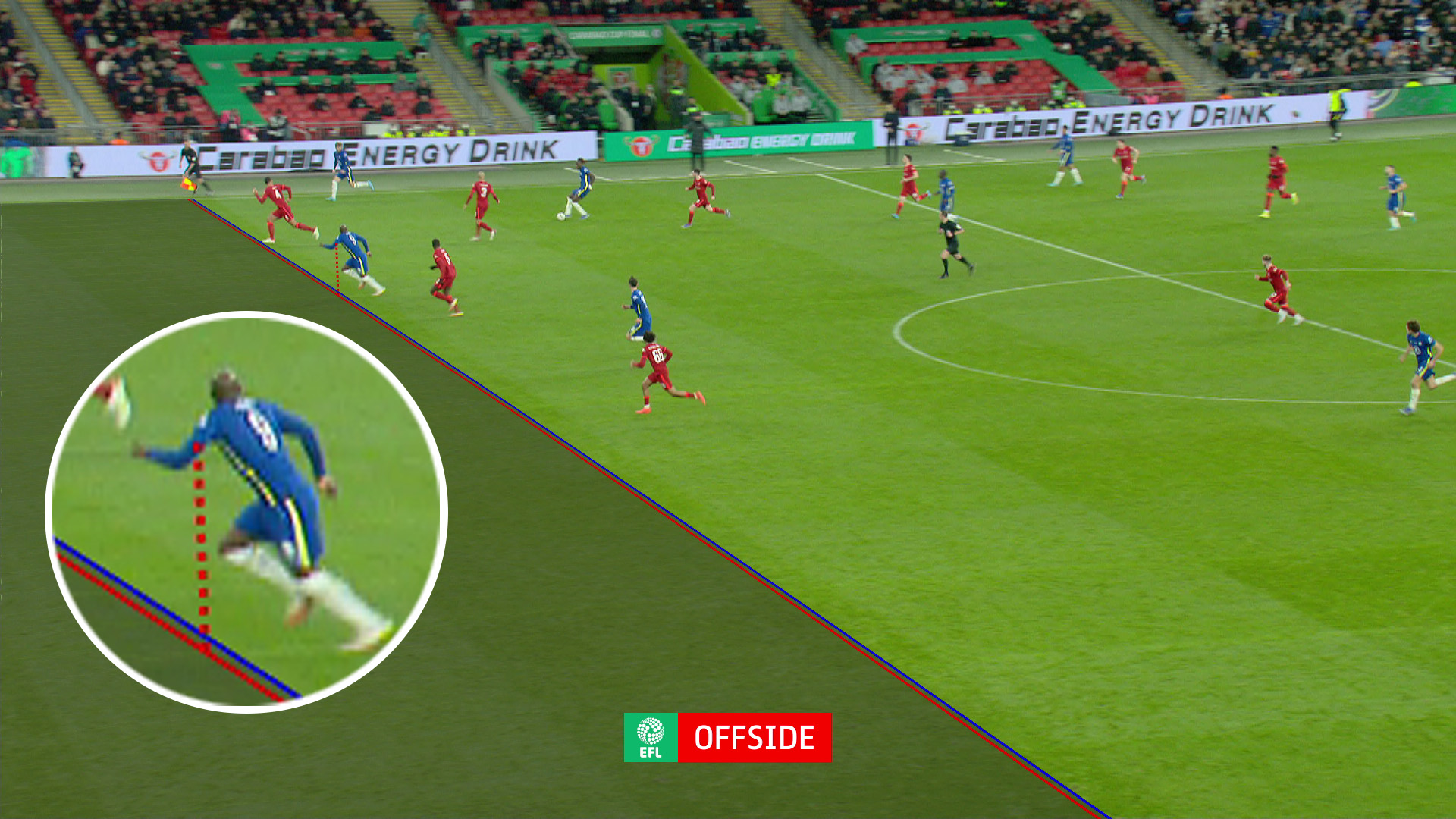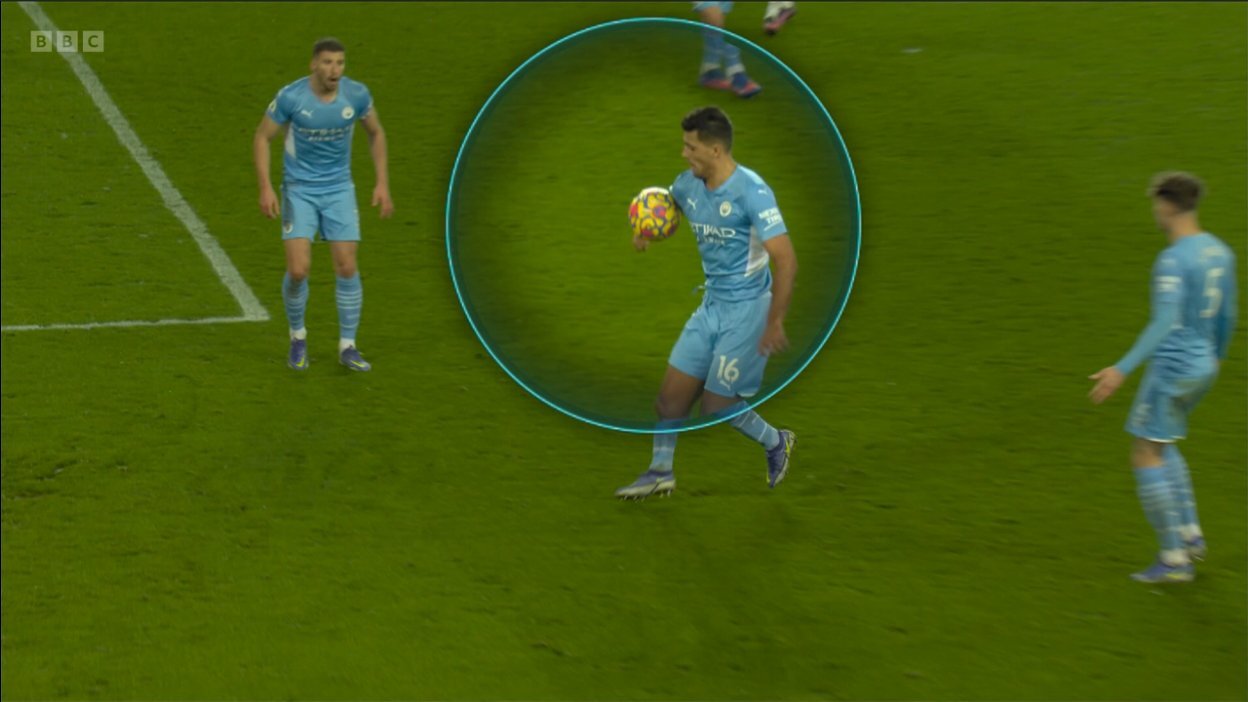It was an eventful weekend in English football as heavyweights Chelsea and Liverpool went head-to-head in the Carabao Cup final and Marcelo Bielsa left English football after close to 4 seasons at Leeds United.
We will tackle the two most debated decisions in the final and then Rodri’s handball. However, we have to clearly outline the offside rule and how it works.
As stated in Law 11:
A player is in an offside position if:
- any part of the head, body or feet is in the opponents’ half (excluding the halfway line) and
- any part of the head, body or feet is nearer to the opponents’ goal line than both the ball and the second-last opponent
The hands and arms of all players, including the goalkeepers, are not considered. For the purposes of determining offside, the upper boundary of the arm is in line with the bottom of the armpit.
A player is not in an offside position if level with the:
- second-last opponent or
- last two opponents
A player in an offside position at the moment the ball is played or touched by a team-mate is only penalised on becoming involved in active play by:
- interfering with play by playing or touching a ball passed or touched by a team-mate or
- interfering with an opponent by:
- preventing an opponent from playing or being able to play the ball by clearly obstructing the opponent’s line of vision or
- challenging an opponent for the ball or
- clearly attempting to play a ball which is close when this action impacts on an opponent or
- making an obvious action which clearly impacts on the ability of an opponent to play the ball or
- gaining an advantage by playing the ball or interfering with an opponent when it has:
- rebounded or been deflected off the goalpost, crossbar, match official or an opponent
- been deliberately saved by any opponent
A player in an offside position receiving the ball from an opponent who deliberately plays the ball, including by deliberate handball, is not considered to have gained an advantage, unless it was a deliberate save by any opponent.
A ‘save’ is when a player stops, or attempts to stop, a ball which is going into or very close to the goal with any part of the body except the hands/arms (unless the goalkeeper within the penalty area).
In situations where:
- a player moving from, or standing in, an offside position is in the way of an opponent and interferes with the movement of the opponent towards the ball this is an offside offence if it impacts on the ability of the opponent to play or challenge for the ball; if the player moves into the way of an opponent and impedes the opponent’s progress (e.g. blocks the opponent), the offence should be penalised under Law 12
- a player in an offside position is moving towards the ball with the intention of playing the ball and is fouled before playing or attempting to play the ball,
- or challenging an opponent for the ball, the foul is penalised as it has occurred before the offside offence
- an offence is committed against a player in an offside position who is already playing or attempting to play the ball, or challenging an opponent for the ball, the offside offence is penalised as it has occurred before the foul challenge
The incident: Joel Matip scores after a well worked freekick but the ball is disallowed due to an off the ball obstruction by Virgil van Dijk.

In this situation the application of the rule is clear, van Dijk is deemed to have interfered with Reece James by “making an obvious action which clearly impacts on the ability of an opponent to play the ball”. The referee deemed that Sadio Mane was only able to head the ball unchallenged, because of Van Dijk’s intervention and because this was done from an offside position the goal was ruled out for offside.
There is no doubt that without the Dutchman’s presence James would have had more mobility and been closer to the ball than he was when Sadio Mane reached it.
Even if van Dijk was onside, it is possible the goal would have been disallowed due to him being in violation of Law 12 by impeding Reece James. However, the threshold for a foul versus offside is much higher as we are used to watching players consistently grapple at set pieces.
The incident: Romelu Lukaku breaks the Liverpool offside trap and gives Chelsea the lead, the goal is disallowed because the Chelsea man’s arm is deemed to be offside.

This decision was very controversial because as many fans correctly stated only body parts you can score with can play you offside. However, the line is clearly drawn from the part of his arm equivalent to the bottom of his arm pit. The same part of the arm with which Craig Dawson scored a winner against Leicester with for context.
The law states: The hands and arms of all players, including the goalkeepers, are not considered. For the purposes of determining offside, the upper boundary of the arm is in line with the bottom of the armpit. My understanding is the midpoint between the elbow and shoulder is the limit and whilst harsh that is exactly what caught Lukaku, and the decision is correct.
I have also seen some refer to the statement earlier about giving attackers the benefit of the doubt. That only applies to situations where the lines are touching so it is impossible to differentiate. In this case there is clearly a space, so it does not apply.
The incident: The ball bounces and hits Rodri’s arm

In my opinion, the ball hits Rodri’s arm and that is a penalty. However, it was not given. The reasons are as follows, based on video evidence the referees could not conclusively decide if the ball had clearly hit his arm (below the sleeve line). This is understandable but it raises another question. Are handballs like goals i.e., does the whole ball have to cross the shirt line for it to be a handball? This must be part of the reason it was not given. Regardless, it was a poor decision, and it might cost Everton later this season as they are sucked into a relegation battle.





















